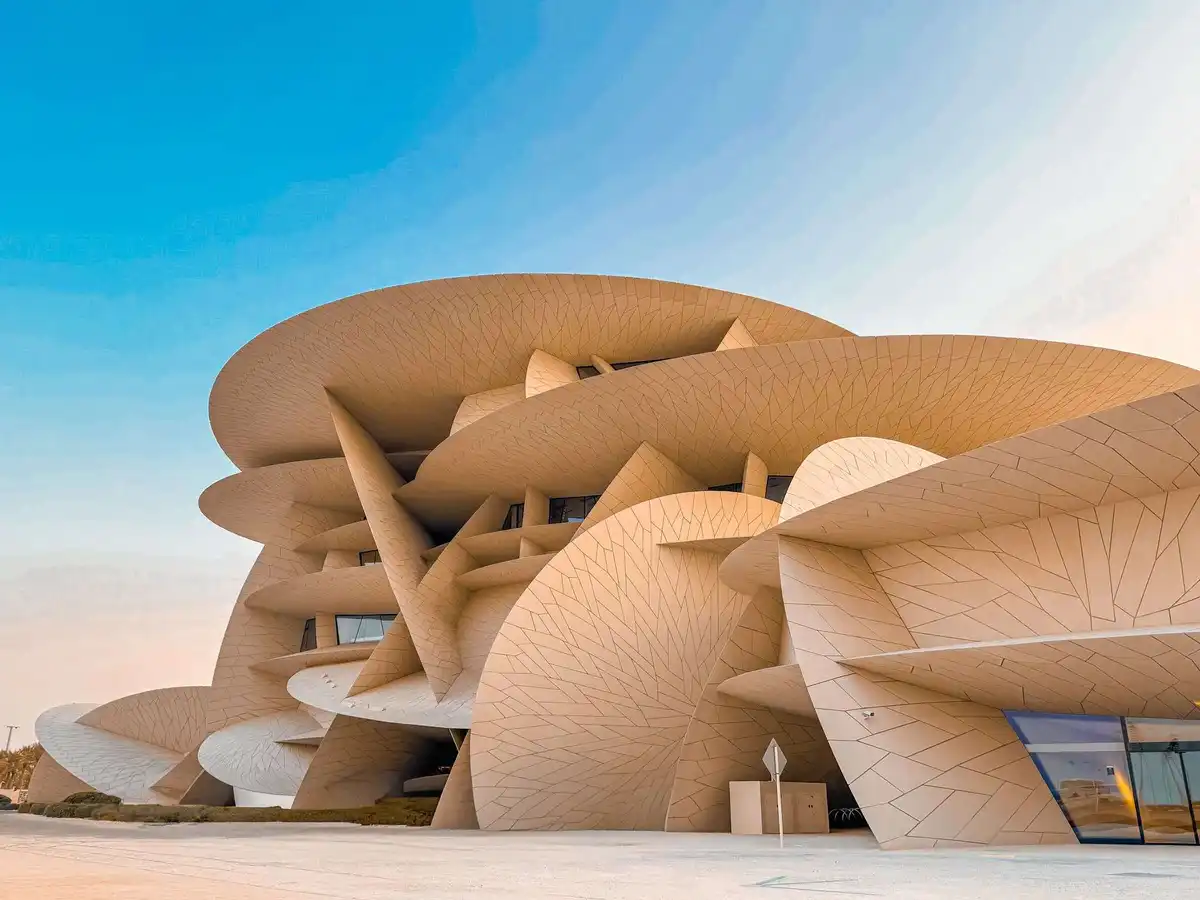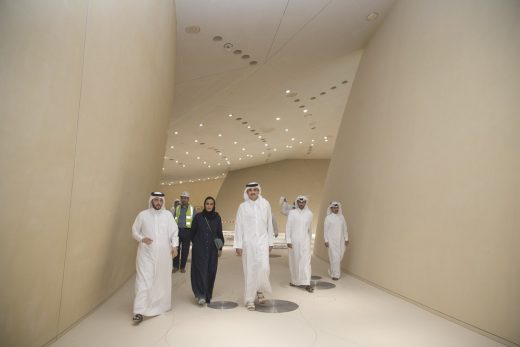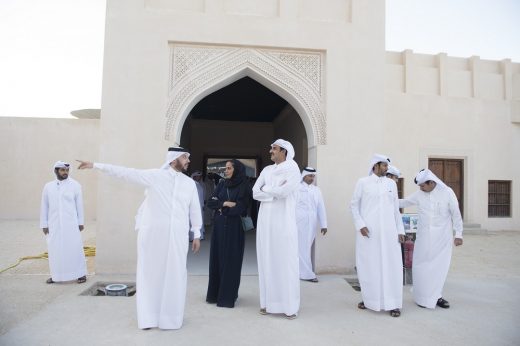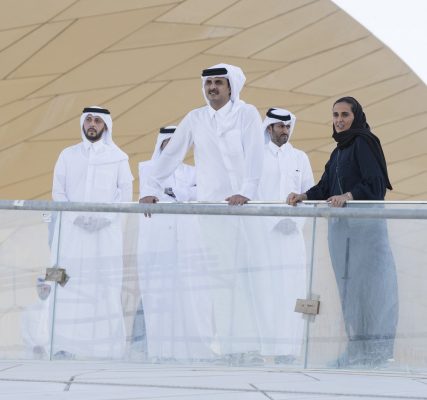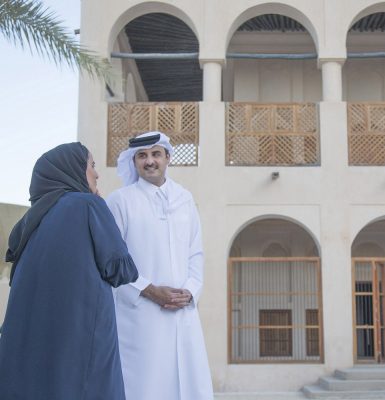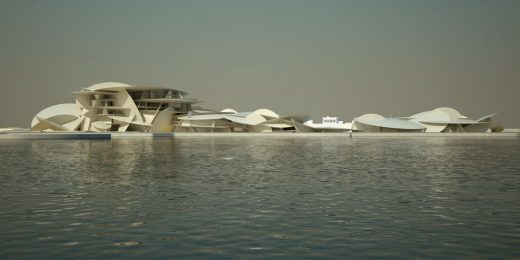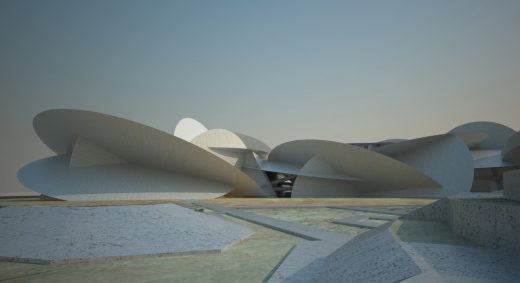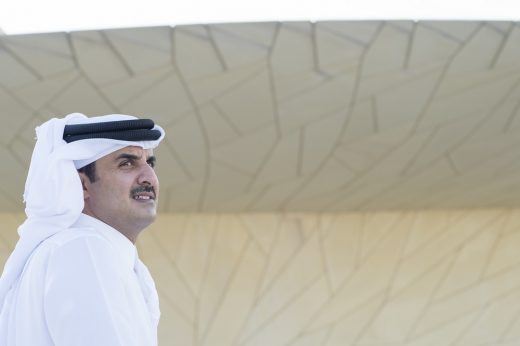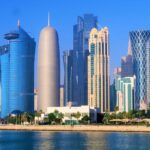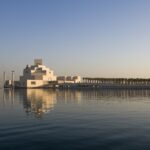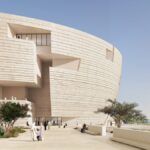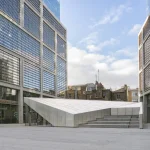National Museum of Qatar building design, NMoQ photos, Fariq Al Salatah Palace, QMA images
Museum Development Qatar
Modern Middle East Building design by Jean Nouvel architect, France.
post updated 8 June 2025
We post a new photo of NMoQ, a vibrant and immersive space that invites all visitors to explore Qatar’s rich heritage and culture:
Architects: Jean Nouvel
HH the Emir of Qatar Sheikh Tamim Bin Hamad Al Thani Visits the Site of the Upcoming National Museum of Qatar
21 Jun 2017 + 24 Mar 2010
National Museum of Qatar Building
Architects: Jean Nouvel
HE Sheikha Al Mayassa bint Hamad bin Khalifa Al Thani Announces Official Opening Date
HH the Emir Sheikh Tamim Bin Hamad Al Thani yesterday visited the site of the upcoming National Museum of Qatar. During his visit, HH the Emir was taken on a tour of the site by H.E. Sheikha Al Mayassa bint Hamad bin Khalifa Al Thani, Chairperson of Qatar Museums and Mansoor bin Ebrahim Al Mahmoud, Chief Executive Officer and Special Advisor to H.E. The Chairperson.
During the visit, H.E. Sheikha Al Mayassa, Chairperson of Qatar Museums, announced that the official opening date of the National Museum will be in December 2018.
The National Museum, designed by world-renowned French architect Jean Nouvel, is inspired by the desert rose. The upcoming museum will combine historic objects and contemporary influences, opening up a dialogue around the impact of rapid change. This museum will give voice to Qatar’s heritage whilst celebrating its future.
Commenting on the opening, HE Sheikha Al Mayassa bint Hamad bin Khalifa Al Thani said:
“Today marks a proud moment for Qatar as we announce the official opening date for our iconic National Museum. The museum is the physical manifestation of Qatar’s proud identity, connecting the country’s history with its diverse and cosmopolitan present. It will reflect a part of every Qatari’s life, representing our roots and identity. The opening of the National Museum of Qatar will firmly position our country on the global map as a progressive, knowledge-based economy with a long and rich history and give Qatar a voice in the world.”
Large numbers of Qatari arts and culture experts are involved in developing the National Museum. The National Museum will also open in the year that the Museum of Islamic Art celebrates its tenth anniversary, a reflection of Qatar’s long-standing investment in the arts. Mathaf: Arab Museum of Modern Art opened in 2010, and the 3-2-1 Qatar Olympic and Sports Museum will open in the next year.
HH Sheikh Tamim emphasised the importance of the Qatar National Vision 2030 and how human development sits at the heart of Qatar’s investments. The National Museum of Qatar supports this vision.
The National Museum of Qatar is built around Sheikh Abdullah bin Jassim Al Thani’s original palace, one of Qatar’s most recognizable landmarks and a building that served as a monument to a historic way of life in Qatar. This palace has a unique historical significance for the State of Qatar and has been recently fully restored. The palace will be a fitting central exhibit within the National Museum when it opens.
Photography Courtesy of Qatar Museums
QATAR MUSEUMS AUTHORITY UNVEILS
JEAN NOUVEL DESIGN AND MULTIFACETED EXHIBITIONS PROGRAM
FOR THE NATIONAL MUSEUM OF QATAR
Marking the next stage of its program to develop Qatar into a hub of culture and communications for the Gulf region and the world, the Qatar Museums Authority (QMA) today revealed its plans for the new National Museum of Qatar, as expressed in a striking and evocative design by Pritzker Prize-winning architect Jean Nouvel.
Embodying the pride and traditions of Qatar’s people while offering international visitors a dialogue about rapid change and modernization, the National Museum of Qatar will be the setting for a program in which entire walls become cinematic displays, “sonorous cocoons”, shelter oral-history presentations and hand-held mobile devices guide visitors through thematic displays of the collection’s treasures. Though built around an historic structure, the Fariq Al Salatah Palace, which had served as a museum of heritage since 1975, the National Museum of Qatar is conceived and designed as a thoroughly new institution, in keeping with the high aspirations that animate QMA.
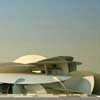
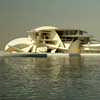
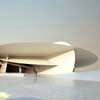
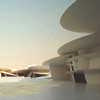
National Museum of Qatar Building images by Artefactory, © Ateliers Jean Nouvel
Jean Nouvel’s design manifests both the active, dynamic aspect of the Museum’s program and its crystallization of the Qatari identity, in a building that, like a desert rose, appears to grow out of the ground and be one with it. Prominently located on a 1.5 million-square-foot site at the south end of Doha’s Corniche, where it will be the first monument seen by travelers arriving from the airport, the building takes the form of a ring of low-lying, interlocking pavilions, which encircle a large courtyard area and encompass 430,000 square feet of indoor space. In its organization, the building suggests the image of a caravanserai-the traditional enclosed resting place that supported the flow of commerce, information and people across desert trade routes-and so gives concrete expression to the identity of a nation in movement. The tilting, interpenetrating disks that define the pavilions’ floors, walls and roofs, clad on the exterior in sand-colored concrete, suggest the bladelike petals of the desert rose, a mineral formation of crystallized sand found in the briny layer just beneath the desert’s surface.
‘The National Museum of Qatar is the next world-class institution that QMA is creating for our people and for our international community’, stated Her Excellency Sheikha Al Mayassa Bint Hamad Bin Khalifa Al-Thani, Chairperson, Qatar Museums Authority. ‘Following the very successful opening in 2008 of the Museum of Islamic Art, which showcases an artistic tradition that spans half the globe, we now look to Qatar’s immediate culture and environment-physical and immaterial, historic and contemporary. With this newest project, announced in the year when Doha is the Capital of Arab Culture, we move closer to realizing QMA’s vision of building a forward-looking, sustainable Qatar.’
Abdulla Al Najjar, Chief Executive Officer of QMA, stated, ‘Taking as its seed the historic palace that was Qatar’s oldest museum, this dramatic project creates an unprecedented 21st century experience celebrating the culture, heritage and future of Qatar and its people. It is characteristic of the spirit of QMA that we have faithfully preserved and incorporated the original palace, respecting this icon of our past, while realizing the astonishing new vision that Jean Nouvel has so brilliantly captured.’
According to Peggy Loar, Director of the National Museum of Qatar, ‘At this unparalleled new institution, Qataris will be able to discover more about their immediate ancestors and their roots in the region, learn about the formation of Qatar’s early cities and above all be exposed to the historical, material culture and intangible heritage represented in the collections. International visitors will come away with a better understanding of the life of the Gulf region, of the specific history of the Qatari people and of the initiatives underway today to advance education, develop every aspect of culture and pursue a program of sustainability. We are extremely fortunate that in realizing this program we have the vision of Jean Nouvel, whose design is at once a masterwork of contemporary architecture and an evocation of the timeless desert.’
Commenting on his design, Jean Nouvel stated, ‘This museum is a modern-day caravanserai. From here you leave the desert behind, returning with treasured images that remain engraved on your memory. The National Museum of Qatar will become the voice of a culture, delivering a message of modernity, metamorphosis and the beauty that happens when the desert meets the sea.’



National Museum of Qatar Building images by Artefactory, © Ateliers Jean Nouvel
National Museum of Qatar – Details of the Building
The National Museum of Qatar building will provide 86,000 square feet of permanent gallery space, 21,500 square feet of temporary gallery space, a 220-seat auditorium, a 70-seat food forum / TV studio, two cafés, a restaurant and a museum shop. Separate facilities are provided for school groups and special guests. Staff facilities include a heritage research center, restoration laboratories, staff offices and collection processing and storage areas. The Museum will be surrounded by a 1.2 million-square-foot landscaped park that interprets a Qatari desert landscape.
Inspired by the desert rose, the interlocking disks that compose the building-some of them standing more or less upright and acting as support elements, others lying more or less horizontal-are of varying curvature and diameter. The disks are made of steel truss structures assembled in a hub-and-spoke arrangement and are clad in glass fiber reinforced concrete panels. Columns concealed within the vertical disks carry the loads of the horizontal disks to the ground.
Glazed facades fill the voids between disks. Perimeter mullions are recessed into the ceiling, floor and walls, giving the glazing a frameless appearance when viewed from the outside. Deep disk-shaped sun-breaker elements filter incoming sunlight.
Like the exterior, the interior is a landscape of interlocking disks. Floors are sand-colored polished concrete, while the vertical disk walls are clad in ‘stuc-pierre,’ a traditional gypsum- and lime-blended plaster formulated to imitate stone.
Thermal buffer zones within the disk cavities will reduce cooling loads, while the deep overhangs of the disks will create cool, shady areas for outdoor promenades and protect the interior from light and heat. Steel and concrete, the main materials of the building, will be locally sourced and/or fabricated. The landscaping will feature sparse native vegetation with low water consumption. Through these and other sustainability measures, the Museum is working to achieve a USGBC LEED Silver rating.
The Museum’s gardens are specifically designed for the intense climate of Qatar. Plantings will include native grasses and indigenous plants, such as pomegranate trees, date palms, herbs and the Sidra tree, the national tree of Qatar. Landscaping will feature sand dunes and stepped garden architecture to create sitting areas and spaces for the Museum’s programs of tours and garden lectures.
Exhibitions and Collections
A tour of the Museum will take visitors through a loop of galleries that address three major, interrelated themes. These are the natural history of the Qatar peninsula, with its flora and fauna that have adapted to this intense environment of sand and sea; the social and cultural history of Qatar, with its traditions, values and stories that spring from the close, age-old interaction between the people and the natural world; and the history of Qatar as a nation, from the 18th century to the dynamic present.
The displays and installations that explore these themes will integrate exciting and involving audiovisual displays, some of them realized on an architectural scale, with carefully selected treasures from the Museum’s collections. These collections currently consist of approximately 8,000 objects and include archeological artifacts, architectural elements, heritage household and traveling objects, textiles and costumes, jewelry, decorative arts, books and historical documents. The earliest items date from the end of the last Ice Age (about 8000 BC). The Bronze Age (about 2000 – 1200 BC) is represented, as are the Hellenistic and early Islamic periods. The Museum also has examples of weapons and other objects from the period of the tribal wars and more contemporary decorative objects used for everyday living.
About the Qatar Museums Authority
The National Museum of Qatar is being developed by the Qatar Museums Authority, which under the leadership of its Chairperson, H.E. Sheikha Al Mayassa Bint Hamad Bin Khalifa Al-Thani, is transforming the State of Qatar into a cultural hub of the Middle East. Qatar Museums Authority was created in December 2005 to combine the resources of all museums in the State of Qatar. The QMA’s vision revolves around the provision of a comprehensive umbrella under which future plans will be drawn for the development of national museums and the establishment of an effective system for collecting, protecting, preserving and interpreting historic sites, monuments and artifacts.
About Jean Nouvel
Jean Nouvel architect is one of the world’s most highly respected architects, winner of the Gold Medal of the French Academy of Architecture, the Aga Khan Award for Architecture, the Praemium Imperiale, the Pritzker Prize, etc.
National Museum of Qatar Building images / information received 240310
Location: Doha, Qatar, the Middle East
New Doha Museum Buildings
Contemporary Doha Museum Architecture
Lusail Museum
Architects: Herzog & de Meuron
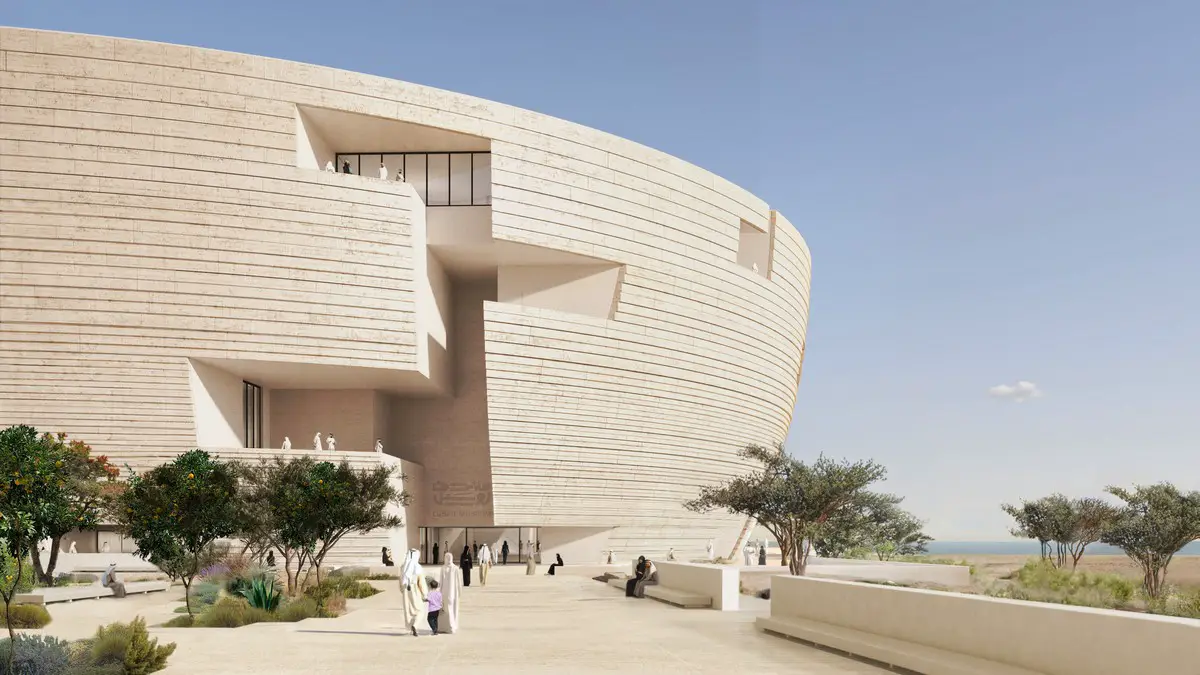
image Courtesy Qatar Museums
Lusail Museum Building Design
Qatar Auto Museum, Lusail Express Way
Designs: OMA
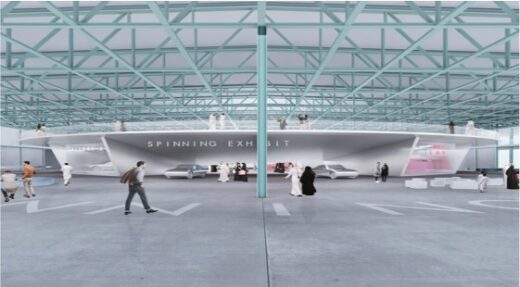
image courtesy of architects practice
Qatar Auto Museum by OMA
Museum of Islamic Art
Design: architect I.M. Pei
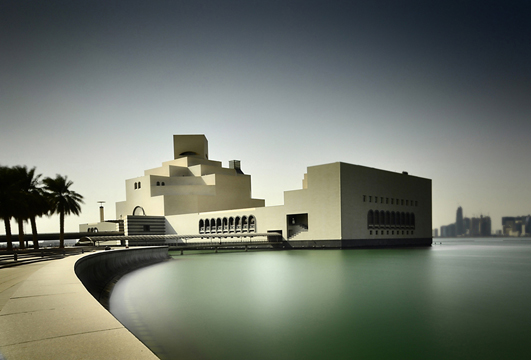
photograph © Pygmalion Karatza
Museum of Islamic Art Doha
New Architecture in Qatar
Contemporary Qatar Architecture
Qatar Architecture Designs – chronological list
The Grove at Qetaifan Island North, Qatar
Architect: Zaha Hadid Architects
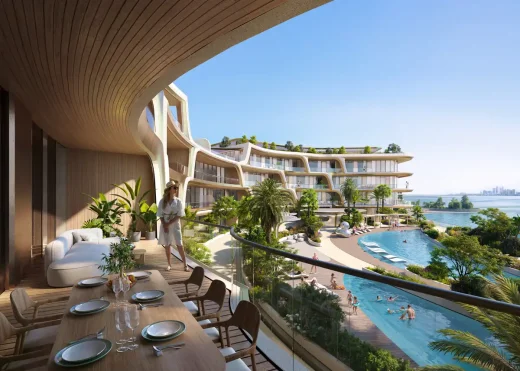
images © Atchain
National Museum of Qatar – NMoQ building
Architects: Jean Nouvel
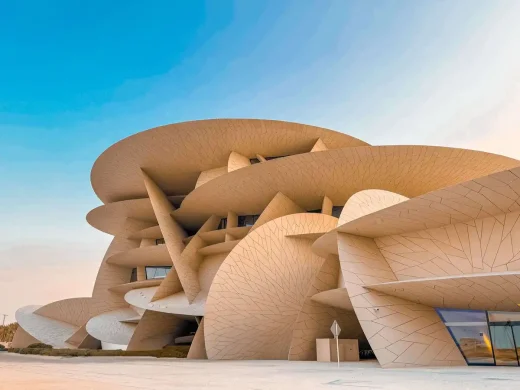
photo © Alex George
Key Middle East Building by Jean Nouvel Architects
Abu Dhabi Louvre Museum Building – Talking Art
Buildings by Jean Nouvel Architects
Spanish hotel interior
Relevant Architecture Links
Qatar National Library Building in Doha
Architects: OMA
Qatar Faculty of Islamic Studies in Doha
Architects: MYAA
Comments / photos for the National Museum of Qatar Architecture design by Jean Nouvel architect, Paris, page welcome.

